 |
 |
Our enthusiastic and extremely knowledgeable perennials team is here to answer your questions and help you choose the best perennials for your situation. There’s always something in bloom for sun, shade, butterflies, birds or deer resistance as well as a variety of bulbs for your space.
Stroll through our time-tested favorites and introduce yourself to the newest varieties. We garden with perennials too; we love them and it shows!
|
104 found, showing page 3 of 7

Height: 18 inches
Spread: 24 inches
Sunlight: full sun
Hardiness Zone: 4a
Group/Class: Kismet Series
Description:
Multitudes of glowing, yellow flowers with gold cones, produced on strong stems; blooms from early summer until frost; use in naturalized areas with other native plants; great for borders
Ornamental Features:
Kismet Yellow Coneflower has masses of beautiful lightly-scented yellow daisy flowers with gold eyes at the ends of the stems from early summer to mid fall, which are most effective when planted in groupings. The flowers are excellent for cutting. Its pointy leaves remain green in color throughout the season.
Landscape Attributes:
Kismet Yellow Coneflower is an herbaceous perennial with an upright spreading habit of growth. Its medium texture blends into the garden, but can always be balanced by a couple of finer or coarser plants for an effective composition.
This is a relatively low maintenance plant, and is best cleaned up in early spring before it resumes active growth for the season. It is a good choice for attracting butterflies and hummingbirds to your yard, but is not particularly attractive to deer who tend to leave it alone in favor of tastier treats. It has no significant negative characteristics.
Kismet Yellow Coneflower is recommended for the following landscape applications:
- Mass Planting
- Rock/Alpine Gardens
- Border Edging
- General Garden Use
- Container Planting
Planting & Growing:
Kismet Yellow Coneflower will grow to be about 16 inches tall at maturity, with a spread of 24 inches. Its foliage tends to remain dense right to the ground, not requiring facer plants in front. It grows at a fast rate, and under ideal conditions can be expected to live for approximately 10 years. As an herbaceous perennial, this plant will usually die back to the crown each winter, and will regrow from the base each spring. Be careful not to disturb the crown in late winter when it may not be readily seen!
This plant should only be grown in full sunlight. It is very adaptable to both dry and moist locations, and should do just fine under typical garden conditions. It is considered to be drought-tolerant, and thus makes an ideal choice for a low-water garden or xeriscape application. It is not particular as to soil type or pH. It is highly tolerant of urban pollution and will even thrive in inner city environments. This particular variety is an interspecific hybrid. It can be propagated by division; however, as a cultivated variety, be aware that it may be subject to certain restrictions or prohibitions on propagation.
Kismet Yellow Coneflower is a fine choice for the garden, but it is also a good selection for planting in outdoor pots and containers. It is often used as a 'filler' in the 'spiller-thriller-filler' container combination, providing a mass of flowers against which the larger thriller plants stand out. Note that when growing plants in outdoor containers and baskets, they may require more frequent waterings than they would in the yard or garden.
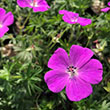
Polific magenta blooms. Naturalizing. Groundcover. USDA 3-9
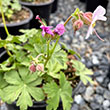
Long-lasting white flowers with a pink blush in the center, bloom from mid-spring to mid-summer. Great as a groundcover. Naturalizing. USDA 5-8
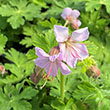
Pinkish-white blooms emerge from dark-pink buds. Bushy, open habit. USDA 4-8

Pink blooms. Self-seeding groundcover. Tolerates clay. USDA 3-8
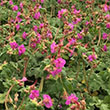
Carmine red blooms. Naturalizing. Groundcover. USDA 5-8.
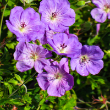
Violet blue flowers. Very beautiful groundcover, border plant or along a walkway. Tolerant of heat and humidity. USDA 5-8
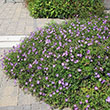
Violet blue flowers. Very beautiful groundcover, border plant or along a walkway. Tolerant of heat and humidity. USDA 5-8

Attractive verigated grass-like foliage and large, spectacular pale blue blooms. USDA 4-9
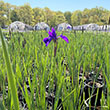
Purple flowers bloom above the narrow green leaves. Naturalizing. USDA 3-8
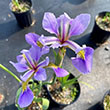
Purple-blue blooms. Tolerates standing water. Native. USDA 3-9
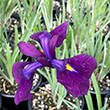
Purple blooms. Variegated foliage. Tolerates wet conditions. USDA 4-9
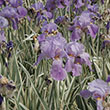
Pale blue blooms. Fragrant. Cream & green variegated foliage. USDA 4-9
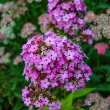
Plant Height: 3 feet
Flower Height: 4 feet
Spacing: 30 inches
Sunlight: full sun, partial shade
Hardiness Zone: 3a
Other Names: Summer Phlox
Description:
Beautiful, fragrant, lavender pink flowers with white flares near the center, that bloom prolifically in mid-summer; multi-branched, upright habit; excellent for perennial borders; good mildew resistance
Ornamental Features:
Jeana Garden Phlox features bold fragrant conical lavender star-shaped flowers with pink overtones and a white flare at the ends of the stems from mid summer to early fall. The flowers are excellent for cutting. Its narrow leaves remain emerald green in color throughout the season.
Landscape Attributes:
Jeana Garden Phlox is a dense herbaceous perennial with an upright spreading habit of growth. Its medium texture blends into the garden, but can always be balanced by a couple of finer or coarser plants for an effective composition.
This plant will require occasional maintenance and upkeep, and should be cut back in late fall in preparation for winter. It is a good choice for attracting butterflies and hummingbirds to your yard. Gardeners should be aware of the following characteristic(s) that may warrant special consideration:
- Disease
Jeana Garden Phlox is recommended for the following landscape applications:
- Mass Planting
- Border Edging
- General Garden Use
- Container Planting
Planting & Growing:
Jeana Garden Phlox will grow to be about 3 feet tall at maturity extending to 4 feet tall with the flowers, with a spread of 3 feet. When grown in masses or used as a bedding plant, individual plants should be spaced approximately 30 inches apart. It grows at a medium rate, and under ideal conditions can be expected to live for approximately 10 years. As an herbaceous perennial, this plant will usually die back to the crown each winter, and will regrow from the base each spring. Be careful not to disturb the crown in late winter when it may not be readily seen!
This plant does best in full sun to partial shade. It does best in average to evenly moist conditions, but will not tolerate standing water. It is not particular as to soil type or pH. It is highly tolerant of urban pollution and will even thrive in inner city environments. This is a selection of a native North American species. It can be propagated by division; however, as a cultivated variety, be aware that it may be subject to certain restrictions or prohibitions on propagation.
Jeana Garden Phlox is a fine choice for the garden, but it is also a good selection for planting in outdoor pots and containers. With its upright habit of growth, it is best suited for use as a 'thriller' in the 'spiller-thriller-filler' container combination; plant it near the center of the pot, surrounded by smaller plants and those that spill over the edges. It is even sizeable enough that it can be grown alone in a suitable container. Note that when growing plants in outdoor containers and baskets, they may require more frequent waterings than they would in the yard or garden.

Height: 20 inches
Spacing: 18 inches
Sunlight: full sun, partial shade
Hardiness Zone: 4b
Group/Class: Western Star Series
Brand: Syngenta
Description:
An exceptional series noted for superior habits and flowering; a beautiful addition to the garden when massed; blooms throughout the summer
Ornamental Features:
Western Star Taurus Shasta Daisy has masses of beautiful white daisy flowers with gold eyes at the ends of the stems from mid spring to mid summer, which are most effective when planted in groupings. The flowers are excellent for cutting. Its serrated narrow leaves remain dark green in color throughout the season.
Landscape Attributes:
Western Star Taurus Shasta Daisy is an herbaceous perennial with an upright spreading habit of growth. Its medium texture blends into the garden, but can always be balanced by a couple of finer or coarser plants for an effective composition.
This plant will require occasional maintenance and upkeep. Trim off the flower heads after they fade and die to encourage more blooms late into the season. It is a good choice for attracting butterflies to your yard. Gardeners should be aware of the following characteristic(s) that may warrant special consideration:
- Insects
Western Star Taurus Shasta Daisy is recommended for the following landscape applications:
- Mass Planting
- Border Edging
- General Garden Use
- Container Planting
Planting & Growing:
Western Star Taurus Shasta Daisy will grow to be about 16 inches tall at maturity, with a spread of 20 inches. When grown in masses or used as a bedding plant, individual plants should be spaced approximately 18 inches apart. It grows at a fast rate, and under ideal conditions can be expected to live for approximately 5 years. As an herbaceous perennial, this plant will usually die back to the crown each winter, and will regrow from the base each spring. Be careful not to disturb the crown in late winter when it may not be readily seen!
This plant does best in full sun to partial shade. It does best in average to evenly moist conditions, but will not tolerate standing water. It is not particular as to soil type or pH. It is highly tolerant of urban pollution and will even thrive in inner city environments. This particular variety is an interspecific hybrid. It can be propagated by division; however, as a cultivated variety, be aware that it may be subject to certain restrictions or prohibitions on propagation.
Western Star Taurus Shasta Daisy is a fine choice for the garden, but it is also a good selection for planting in outdoor pots and containers. With its upright habit of growth, it is best suited for use as a 'thriller' in the 'spiller-thriller-filler' container combination; plant it near the center of the pot, surrounded by smaller plants and those that spill over the edges. Note that when growing plants in outdoor containers and baskets, they may require more frequent waterings than they would in the yard or garden.
104 found, showing page 3 of 7















